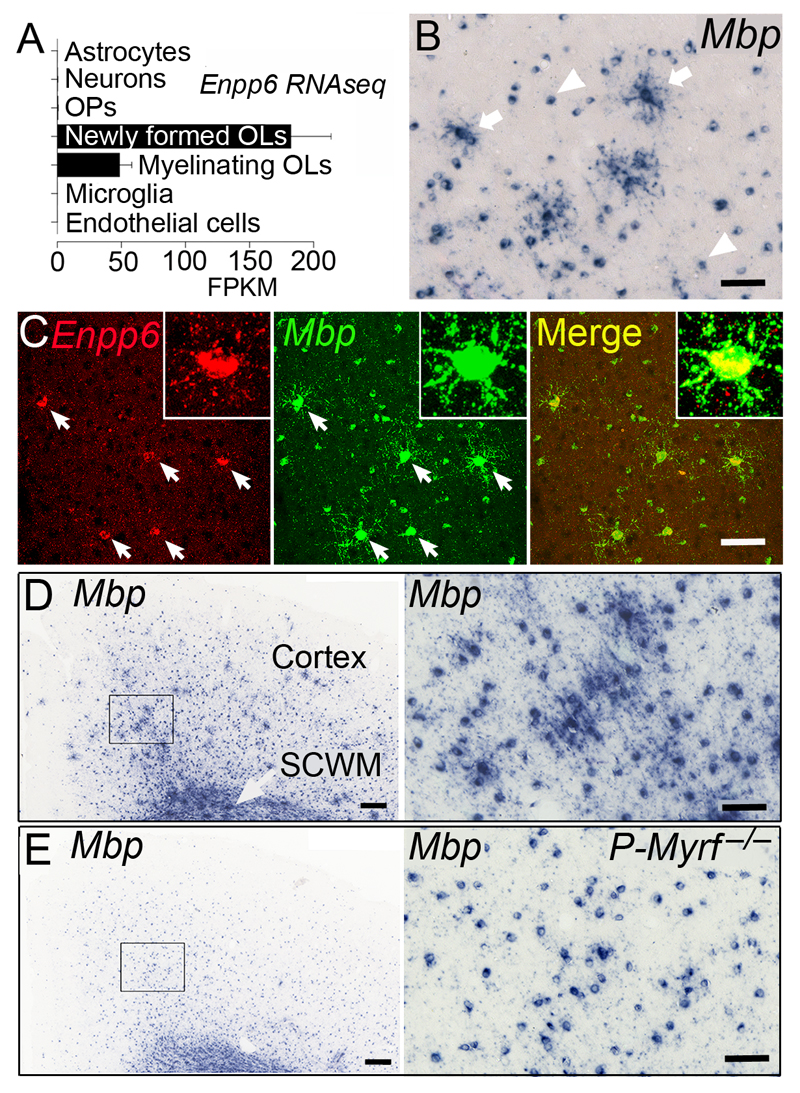Fig. 3.
Enpp6 marks newly-forming, pre-myelinating oligodendrocytes. (a) RNA-seq data adapted from reference 27, http://web.stanford.edu/group/barres_lab/brain_rnaseq.html Enpp6 is expressed highly in newly-formed oligodendrocytes (OLs) and less so in myelinating oligodendrocytes. FPKM: fragments per kilobase of transcript per million mapped reads, but not in OPs or other neural cells. (b) ISH for Mbp transcripts on sections of P90 mouse motor cortex reveals many small cell bodies of mature oligodendrocytes (arrowheads) and a few larger process-bearing “spidery” cells (arrows), resembling “pre-myelinating” oligodendrocytes described previously31,32. (c) Double ISH for Mbp and Enpp6 shows that the spidery Mbp+ cells (arrows) are also Enpp6+. Under our ISH conditions (Supplementary Fig. 2) all Enpp6 high cells are spidery Mbp+ cells and vice versa; they represent ~5% of all Mbp+ cells in both grey and white matter at P90. (d) The spidery Mbp+ cells can be recognized in both cortical grey matter and white matter at P90, although the high density of Mbp+ mature oligodendrocytes tends to obscure them in white matter. The right panels of (D) and (E) are higher-magnification images of the areas indicated on the left. (e) In P-Myrf –/– brain at P90 there are almost no Mbp+ spidery cells in grey or white matter, identifying them as newly-forming oligodendrocytes. SCWM, sub-cortical white matter. Images are representative of >3 similar experiments. Error bars in (a) are s.e.m. Scale bars: (b,c) and (d right, e right) 50 μm, (d left, e left) 200 μm.

